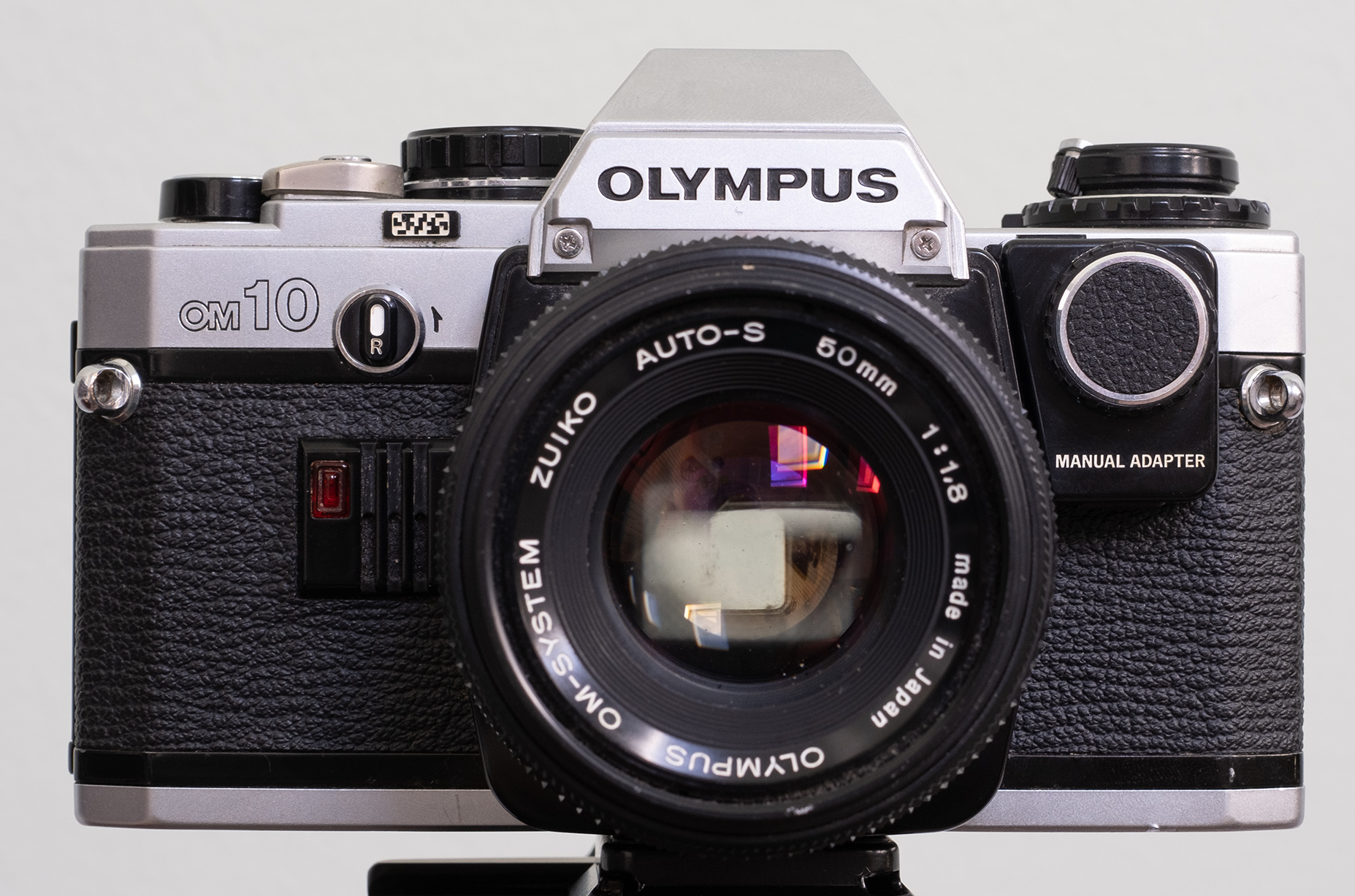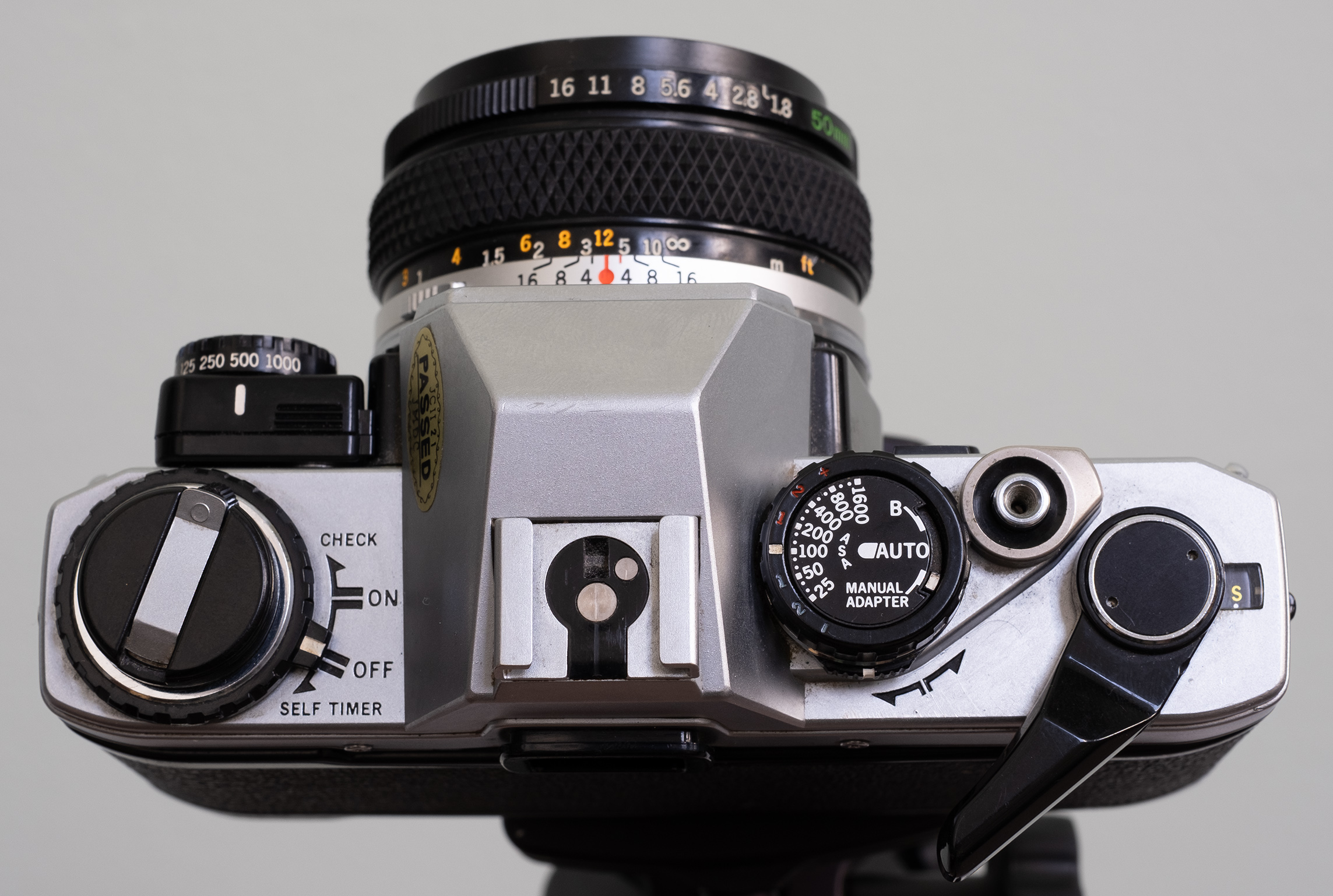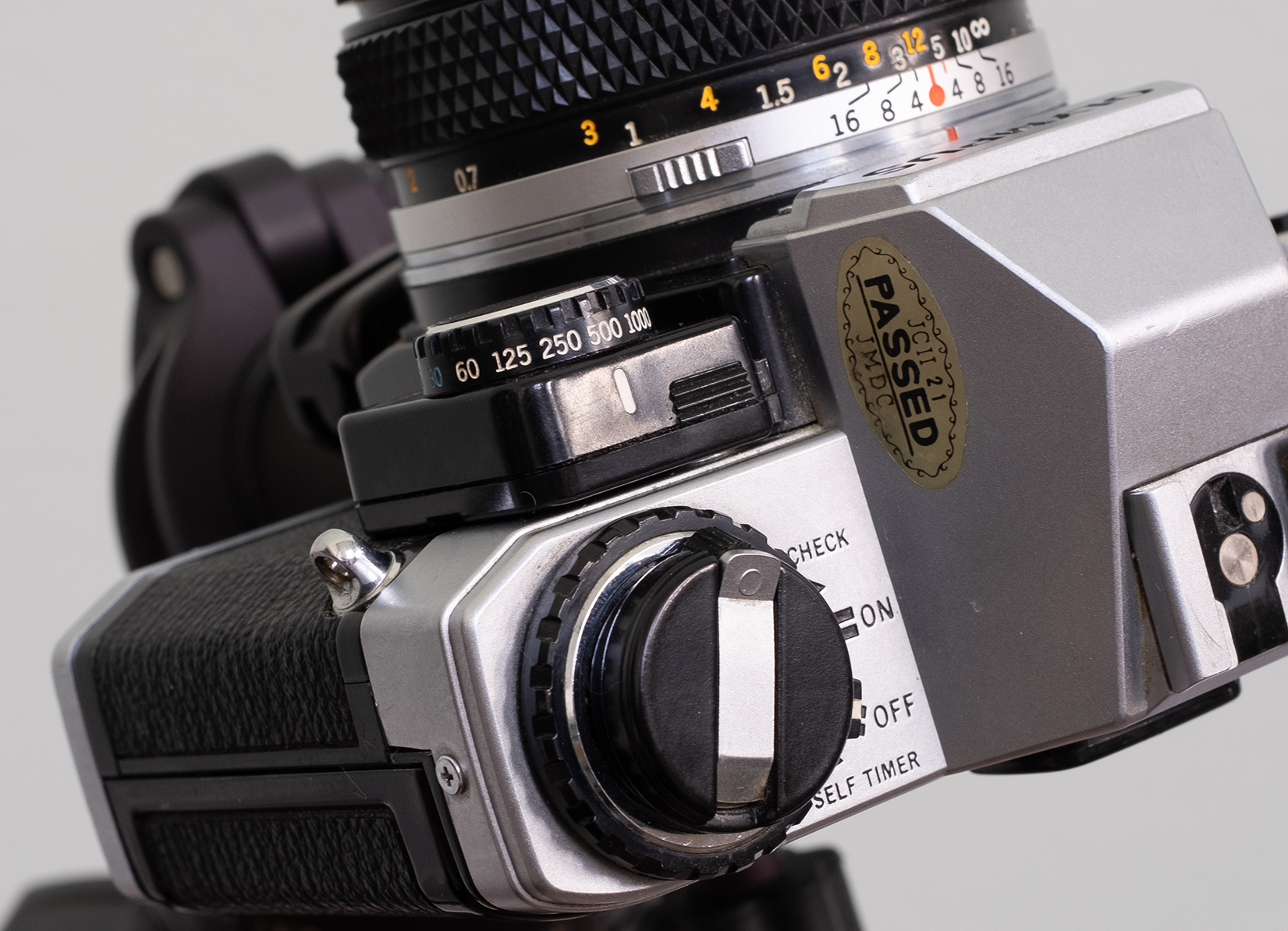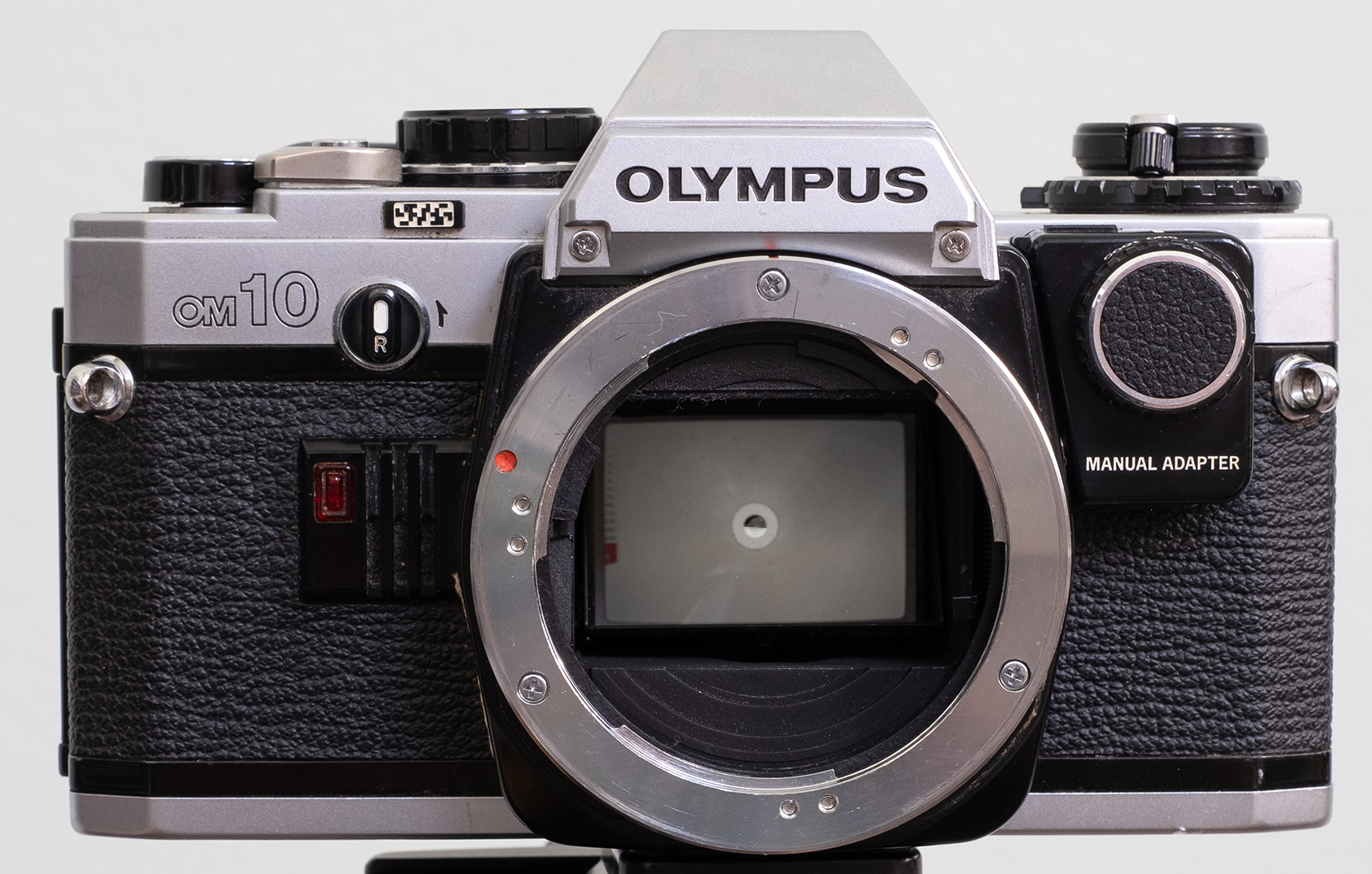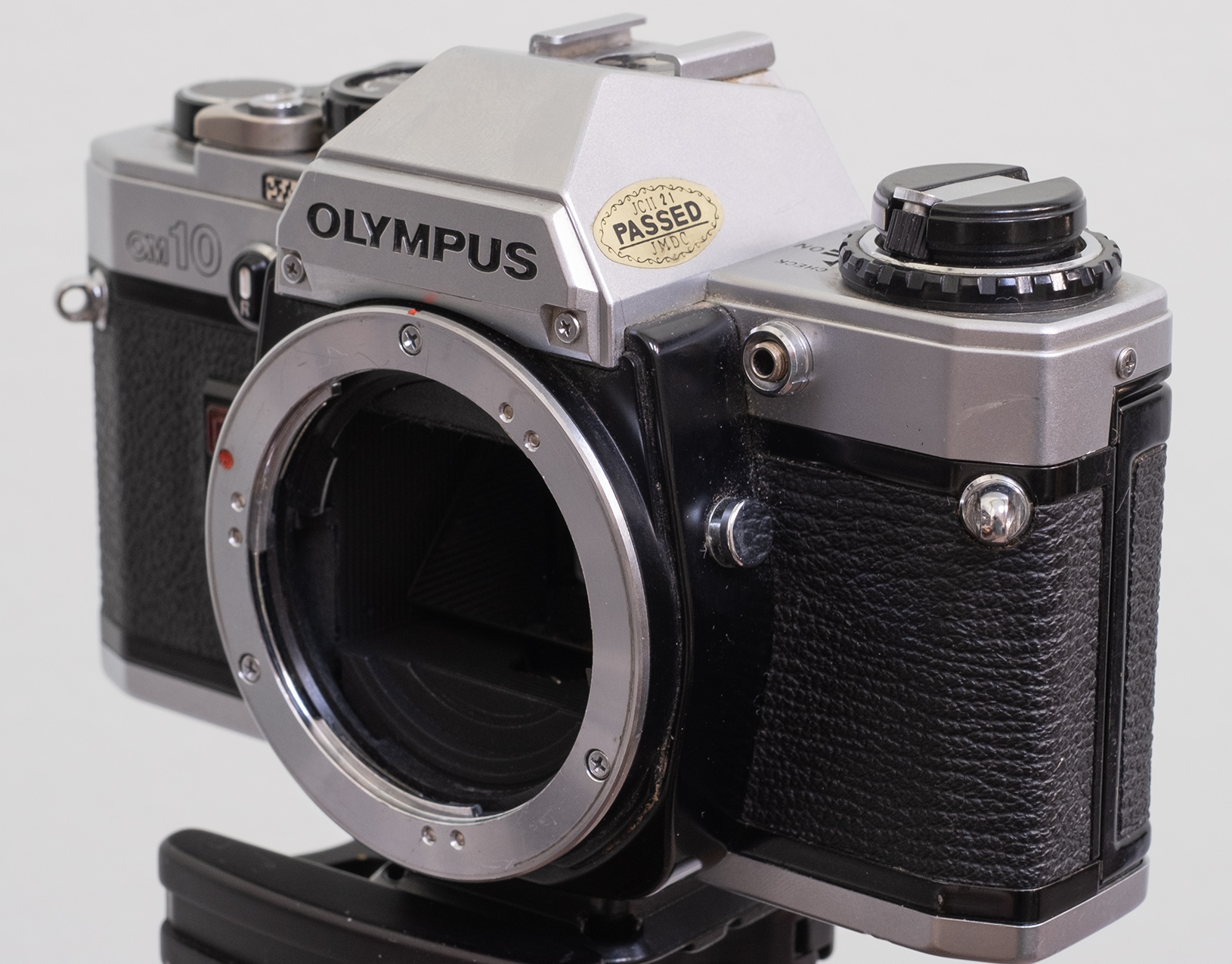Olympus OM10
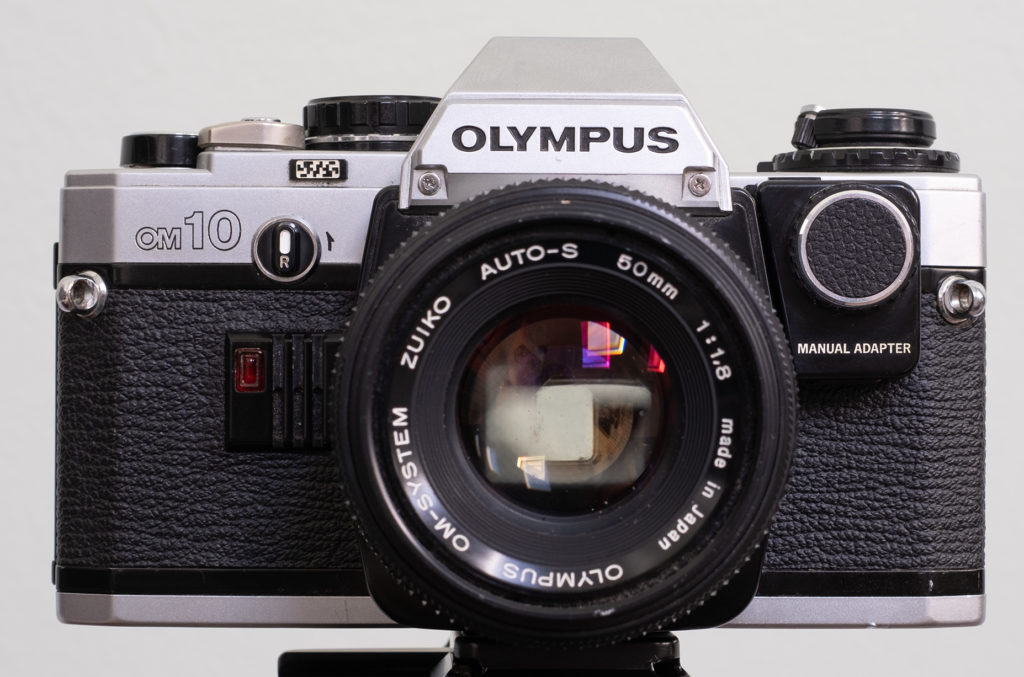
In 1972 Olympus introduced their OM line, and reset consumer expectations for the size and heft of a 35mm camera body. The various OM1/2 variants were very successful and so, in 1979, the OM10 was introduced at a more amateur friendly price point.
During the time when I studied photography at school – 1979-1981 – the OM10 was heavily advertised in the various photo rags of the time. Construction was a little less robust than the pro oriented single digit models (OM1 etc), but price was commensurately lower and it still accepted most of the OM line of accessories.
In standard configuration the OM10 is aperture priority only, much like the Pentax ME/MV, but a rather dinky little manual adaptor was offered – and which is fitted to this example. The manual adaptor allows the user to select the shutter speed when the primary dial is set to manual by way of a rather clumsy slide switch. It’s a very simple affair comprising of nothing more than a calibrated knob and a mini headphone jack. I strongly suspect it’s nothing more than a well calibrated variable resistance.
There are a couple of aspects of the OM line that are noteworthy, including the presence of depth of field preview built into the lens rather than the body. There’s a little tab on most OM lenses which sops down the aperture mechanism. While on the subject of OM lenses, it’s noteworthy that the aperture ring is at the front of the lens rather than at the rear – where almost every other maker put it. Personally I’m not a fan of this approach.
While smaller than the prevailing 35mm bodies when the OM line was launched in 1972, but the late ’70s Pentax had shown us what was possible with the ME line. The OM10 is bigger and feels crude by comparison – dials seem plasticky and finicky to operate compared to the ME derivatives.
The museum example seems to be in pretty decent working order – the battery is still operational, the shutter speed lights up in the viewfinder and the electronic self timer works. It even has the iconic Japanese Camera Inspection Institute quality control sticker intact 🙂


